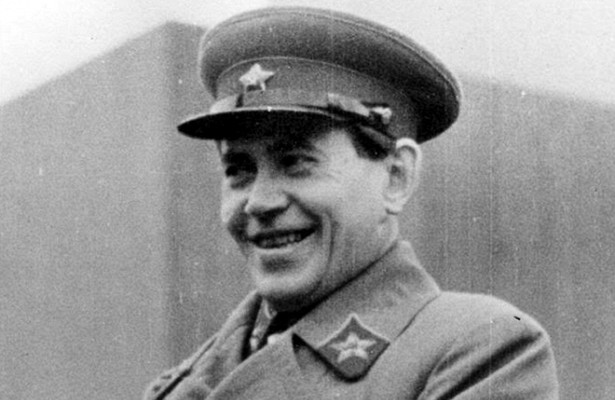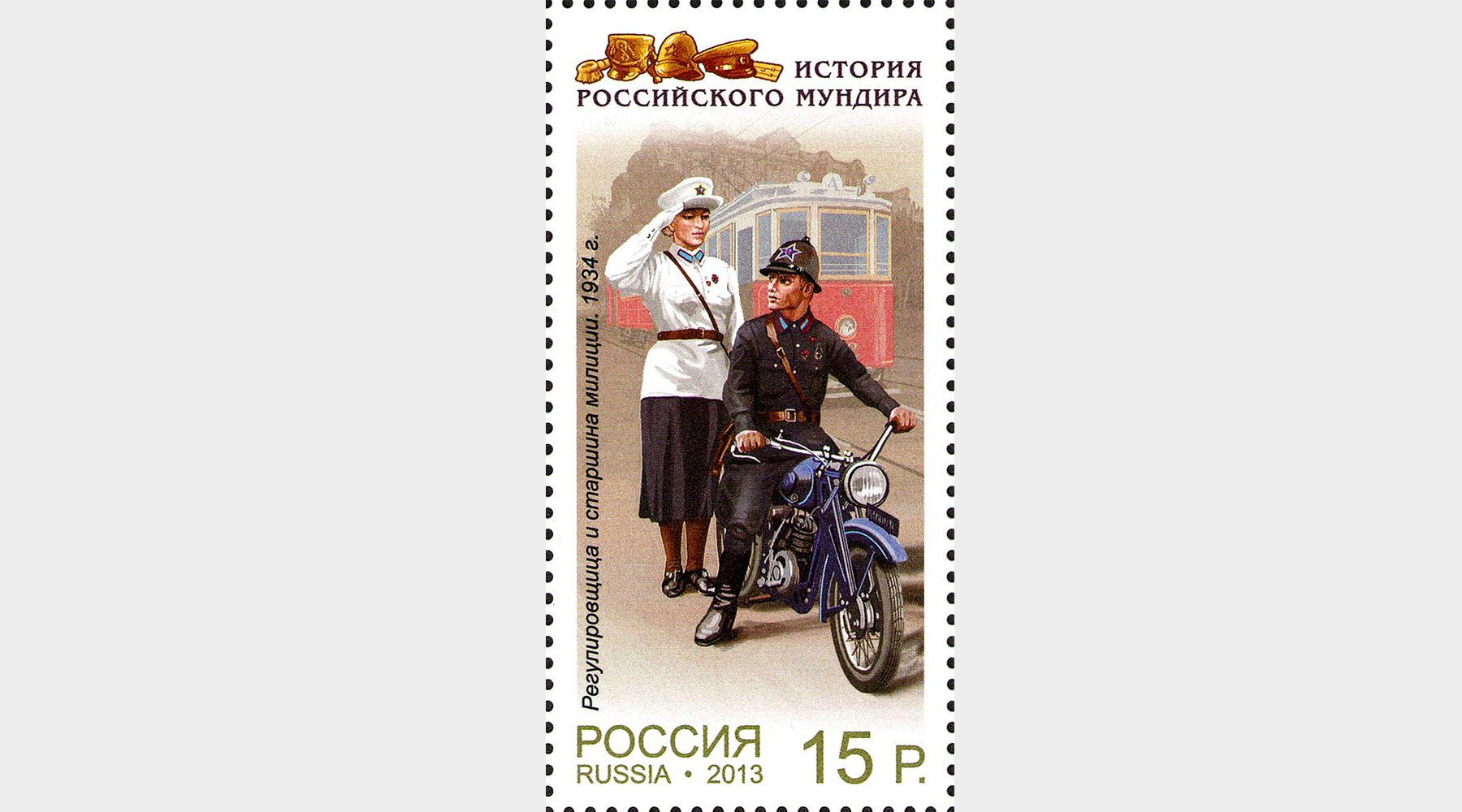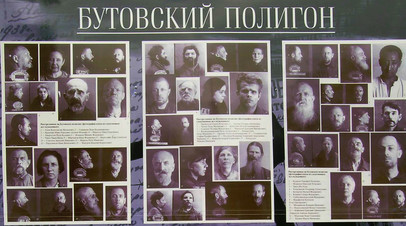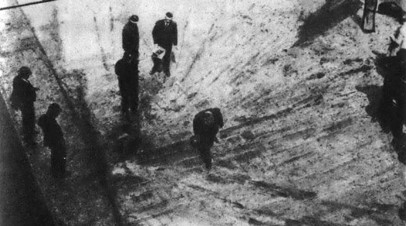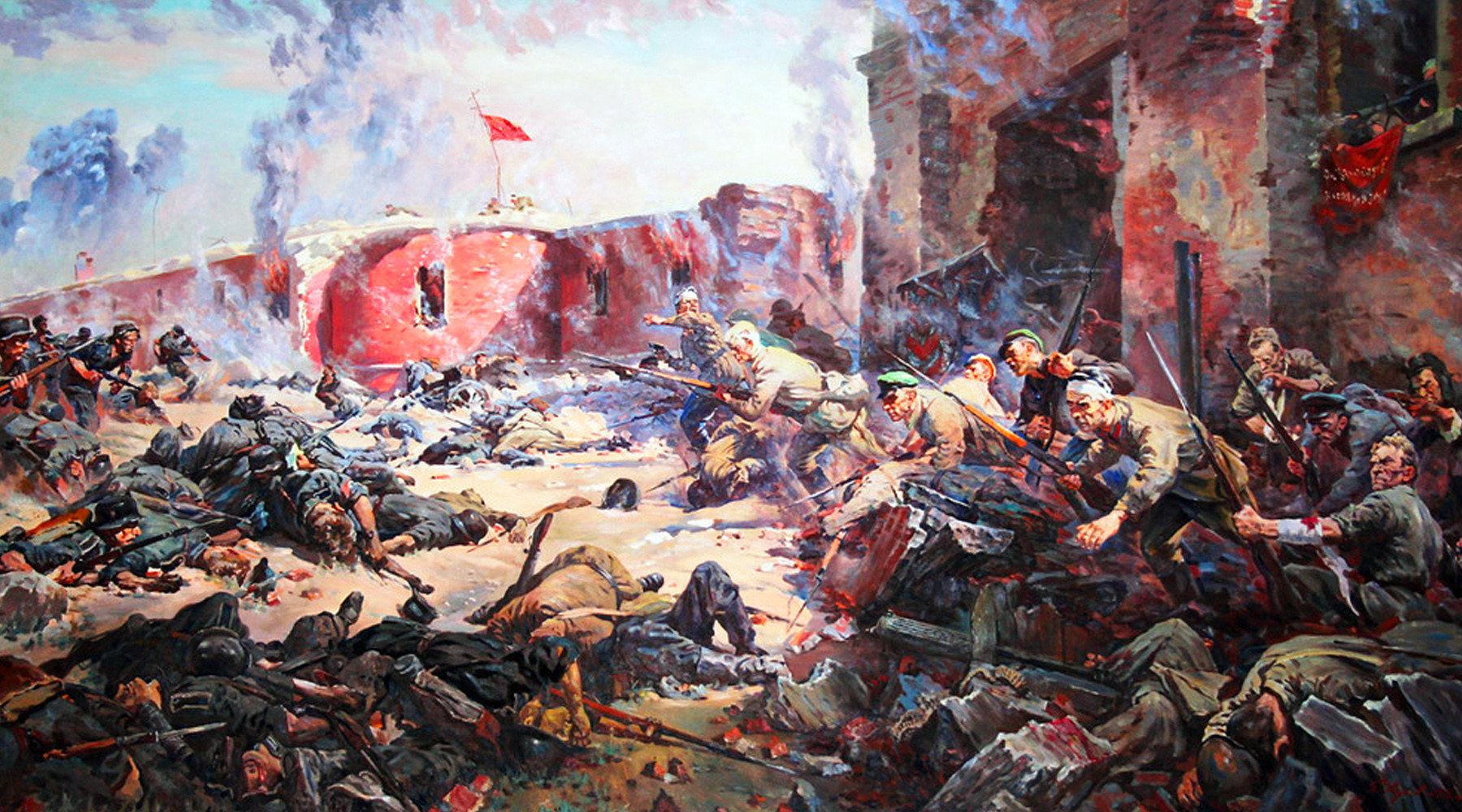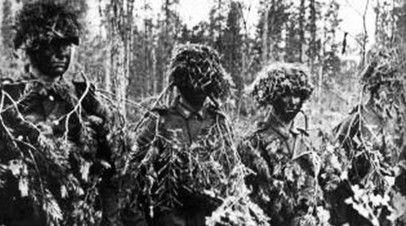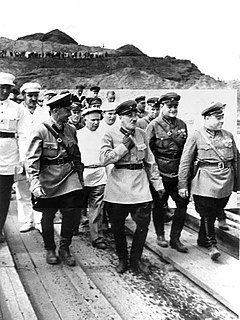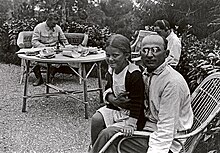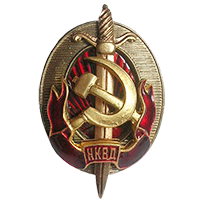Руководители НКВД: почему все они были казнены
Существовавший в 1934 – 1946 гг. НКВД заслужил печальную славу как инструмент сталинских репрессий. Но все главы НКВД и многие их заместители были сами обвинены в том, что должны были искоренять – в измене и попытках госпереворота. Всех их, как и их жертв, расстреляли.
Ягода
Он работал в ЧК и ОГПУ, с 1934 член ЦК ВКП(б), во период внутрипартийной борьбы выступал на стороне Сталина и участвовал в подавлении оппозиции. Когда ЦК (то есть Сталин) принимал решение об аресте того или иного лица, Ягода заводил дело, и вскоре признание из жертвы выбивали, а все, что свидетельствовало в пользу ее невиновности, отметалось.
Пытки и фабрикации были обычных делом, в 1934 г. даже Политбюро пришлось признать, что ОГПУ активно пользуется незаконными методами следствия. И тем не менее, Генрих Ягода в том же году стал первым главой НКВД. Он же стал первым творцом ГУЛАГа. В то же время Ягода оказался не вполне подконтролен Сталину – время от времени он давал понять, что хотел бы отказаться от фабрикации и ввести репрессии в рамки закона. Постепенно Сталин начал все больше опираться на Н.И. Ежова, который все выполнял, не задавая никаких вопросов.
В 1936 Ягода был снят со своего поста, а в 1937 арестован. Его обвинили не просто в потворстве оппозиции, а в участии в заговоре против Сталина и подготовке госпереворота. Когда Ягоду спросили на суде, не сожалеет ли он о своей измене, он ответил, что сожалеет только, что не расстрелял всех, когда «мог это сделать». Ягода был осужден и расстрелян в 1938. В лагерях оказалась вся его семья, две сестры были расстреляны.
После ареста Ягоды при обыске у него нашли не только троцкистскую литературу, но и немало драгоценностей и денег, порнографические фильмы, открытки и резиновый фаллоимитатор.
Ежов
Казалось бы, Сталин нашел идеального наркома. Ежов беспощадно преследовал троцкистов и других нелояльных вождю лиц. Он стал неутомимым исполнителем Большого террора 1937–1938 гг. Троцкисты, зиновьевцы, бухаринцы — десятки и сотни тысяч людей были осуждены за связь с оппозиционерами и заговорщиками (реальными или мнимыми), лишены свободы или расстреляны.
В 1938 Ежов был смещен, а на его место поставлен Лаврентий Берия. Ежова арестовали и обвинили в том, что он готовил террористов и путч на 21-ю годовщину революции. Кроме того, Ежова обвинили в мужеложстве (в этом, кстати, он признался легко, и написал список своих любовников, в числе которых был его охранник: всех этих людей позже расстреляли). Кстати, на обыске у Ежова нашли тот самый фаллоимитатор, что прежде обнаружили у Ягоды. В остальном Ежов своей вины не признавал. Но в 1940 г. его все равно расстреляли, а семью также репрессировали.
Берия
Старый партиец и сотрудник госбезопасности, Берия пробыл главой НКВД до конца 1935 г. Он сумел полностью доказать свою лояльность Сталину и не допустить заговоров против себя среди подчиненных. До смерти Сталина в 1953 г. Берия оставался одним из первых лиц СССР. И только в ходе борьбы за власть против Маленкова, Хрущева и Булганина он был обвинен в шпионаже и расстрелян.
Но большая часть самых кровавых сталинский палачей разделили участь Ягоды и Ежова еще при Сталине. Я. Агранов (соратник Ягоды и Ежова) расстрелян в 1938, Г. Прокофьев (заместитель Ягоды) – расстрелян в 1937, М. Берман, М. Фриновский, Л. Бельский, В. Курский, С. Жуковский, Л. Заковский и многие другие творцы террора были казнены в 1937 – 1939 гг. Те, кто вместе с Ягодой и Ежовым обличал и карал изменников, как и они сами, были объявлены изменниками.
Почему Сталин казнил их, остается загадкой, пока закрыты архивные документы о следствии и судах над этими людьми. Вероятнее всего, Сталин решал две основные задачи: во-первых, нужно было устранить тех, кто слишком много знал о механизмах репрессий и на кого позже, в случае необходимости, можно было бы свалить всю вину за расстрелы невиновных, во-вторых, пока репрессии были в разгаре, Сталин еще не утвердился окончательно в роли неоспоримого и единственного претендента на власть.
Концентрация власти в разгар террора в руках глав НКВД делала их потенциально опасными для Сталина. Могло показаться удобным решение убрать их после того, как они сделали всю черную работу, но еще не успели обрасти личными доверительными связями и набрать личных сторонников. Избежал этой участи при Сталине только Берия, пришедший на излете Большого террора и по характеру максимально лояльный уже бесповоротно утвердившемуся Сталину.
85 лет назад был создан Народный комиссариат внутренних дел СССР (НКВД). Он объединил в себе структуры, отвечающие за различные сферы жизнедеятельности общества: от внешней разведки и охраны государственной границы до борьбы с пожарами и регулирования дорожного хозяйства. По словам историков, из-за репрессий конца 1930-х годов за аббревиатурой НКВД закрепилось негативное значение, однако осуждать всех представителей структуры, которая внесла свой вклад в модернизацию СССР и победу над нацизмом, нельзя. Эксперты считают, что правильнее всего рассматривать деятельность Наркомата внутренних дел в контексте того, кто возглавлял ведомство в конкретный период времени.
Народный комиссариат внутренних дел РСФСР был образован сразу после Октябрьской революции — 8 ноября 1917 года. Два дня спустя было принято постановление «О рабочей милиции», ставшее основой для формирования первых советских органов охраны правопорядка. Подразделения госбезопасности РСФСР изначально были полностью отделены от НКВД. 7 декабря Совнарком принял решение о создании Всероссийской чрезвычайной комиссии по борьбе с контрреволюцией и саботажем (ВЧК при СНК РСФСР). В марте 1919 года должности наркома внутренних дел и председателя ВЧК совместил Феликс Дзержинский.
6 февраля 1922 года ВЧК официально была упразднена. Вместо неё Всероссийский центральный исполнительный комитет создал Государственное политическое управление (ГПУ) при НКВД РСФСР. Так была предпринята первая попытка объединить милицию и органы госбезопасности в единое ведомство.
Однако эксперимент продлился недолго. Вскоре после образования СССР обеспечение госбезопасности решили отнести к общесоюзному функционалу. 15 ноября 1923 года было создано Объединённое государственное политическое управление при Совнаркоме СССР. А Наркомат внутренних дел остался структурой республиканского уровня. В его ведении находились охрана общественного правопорядка, борьба с преступностью, управление местами заключения и коммунальным хозяйством. Дзержинский оставил пост наркома внутренних дел, сконцентрировавшись на работе в ОГПУ, которым он руководил до своей смерти в 1926 году. В дальнейшем ОГПУ возглавил бывший первый заместитель Дзержинского — Вячеслав Менжинский.
Создание НКВД СССР
Республиканские наркоматы внутренних дел были ликвидированы в 1930 году. Структура органов, отвечающих за охрану правопорядка, борьбу с преступностью и гражданский документооборот резко усложнилась. Подразделения, входившие ранее в систему НКВД РСФСР, были поделены между республиканскими совнаркомами и президиумами ЦИК. При этом параллельно с органами исполнительной власти милицией должно было руководить и ОГПУ.
10 июля 1934 года система была упрощена: ЦИК СССР издал постановление о создании общесоюзного Народного комиссариата внутренних дел. Объединённое государственное политическое управление вошло в него на правах Главного управления государственной безопасности (ГУГБ). Помимо этого, в состав НКВД СССР были переданы подразделения милиции и уголовного розыска, пограничной и внутренней охраны, пожарной охраны, управления исправительно-трудовыми лагерями (ГУЛАГ), управления регистрации актов гражданского состояния. В ведение НКВД также частично были переданы вопросы противовоздушной обороны и дорожного хозяйства (главное управление шоссейных дорог).
- © Wikimedia Commons
«Было создано суперведомство. Проще перечислить, чем оно не занималось, чем то, чем занималось. НКВД СССР затрагивало так или иначе все сферы жизнеобеспечения общества», — отметил в интервью RT историк спецслужб и писатель Александр Колпакиди.
По словам эксперта, важным направлением работы общесоюзного НКВД было курирование развития народного хозяйства.
«Наркомат внутренних дел — это приводной ремень модернизации, проходившей в это время в обществе и государстве. Без участия органов госбезопасности данный процесс был бы невозможен, так как он с самых разных сторон наталкивался на сопротивление, — подчеркнул Колпакиди. — Открытое вооружённое сопротивление власти к этому времени было подавлено, в том числе и с привлечением армии. А вот скрытое никуда не делось — происходили акты саботажа, диверсии».
Первым народным комиссаром внутренних дел СССР стал Генрих Ягода, находившийся на службе в органах ВЧК/ОГПУ с 1918 года. Согласно свидетельствам начальника секретно-политического отдела НКВД Георгия Молчанова, Ягода был сторонником либерализации политики правоохранительных органов.
Ежовщина и репрессии
В сентябре 1936 года Ягода перешёл с поста наркома внутренних дел на должность главы наркомата связи. А НКВД СССР возглавил Николай Ежов, занимавшийся до этого преимущественно партийной работой.
«Ежов — это непонятный человек с придуманной биографией. В то же время он был харизматичен и смог обаять даже Сталина, который ему некоторое время всецело доверял», — рассказал Александр Колпакиди.
- Николай Ежов
- © Wikimedia Commons
На период нахождения Ежова на посту главы НКВД пришлось время так называемого Большого террора, известного также как ежовщина. В 1937 году при подразделениях НКВД были созданы особые органы — так называемые тройки, имевшие право приговаривать к расстрелу, а также к заключению в лагеря или тюрьмы. Согласно приказам НКВД, полномочия «троек» распространялись на пресечение «антисоветской деятельности» бывших кулаков, членов антисоветских партий и контрреволюционных формирований, а также уголовников. Решения выносились заочно, на основании минимального количества документов. При Ежове органами НКВД было арестовано свыше 1,5 млн человек, более 600 тыс. приговорены к высшей мере наказания.
В ноябре 1938 года постановлением Совнаркома и ЦК ВКП (б) «тройки» были ликвидированы. Их члены были обвинены в «безответственном отношении к следственному производству и грубом нарушении установленных законом процессуальных правил».
Также по теме
Большой террор: 80 лет постановлению «Об антисоветских элементах»
2 июля 1937 года было подписано постановление ЦК ВКП(б) «Об антисоветских элементах». Этот документ запустил маховик Большого террора…
О причинах Большого террора и его сворачивания историки дискутируют по сей день. Одни видят в массовых репрессиях попытку Иосифа Сталина укрепить собственную власть, другие, напротив, — стремление части партийной верхушки отстранить главу государства от власти.
По мнению Александра Колпакиди, репрессии 1937—1938 годов могли быть связаны с попыткой группы людей, к которой принадлежал Николай Ежов, захватить власть в СССР.
«По моему мнению, Ежов сознательно запустил Большой террор, чтобы спровоцировать недовольство населения. Сталин был объективно очень популярен в народе, и для того, чтобы захватить власть, эту популярность необходимо было подорвать», — считает эксперт.
По его словам, большинство причастных к террору в течение короткого времени понесли ответственность за свои поступки. «Основная масса из них после 1938 года была расстреляна», — отметил Колпакиди. 24 ноября 1938 года Ежов был освобождён от должности главы НКВД. В апреле 1939 года его арестовали по обвинению в попытке государственного переворота и терроризме. 4 февраля 1940 года он был расстрелян по приговору военной коллегии Верховного суда СССР. Наркомат внутренних дел СССР возглавил Лаврентий Берия.
На линии фронта и не только
Несмотря на то что деятельность органов НКВД сегодня у многих ассоциируется именно с Большим террором, на ведомство был возложен огромный комплекс задач, связанных с обеспечением жизнедеятельности общества. Стоит отметить, что вскоре после создания НКВД СССР в стране начал снижаться уровень преступности. Активно работали и разведывательные подразделения НКВД.
На 1930-е годы приходится ряд выдающихся успехов советских «рыцарей плаща и кинжала». К примеру, именно в это время были привлечены к сотрудничеству по идеологическим мотивам подданные Великобритании, которые входили в так называемую Кембриджскую пятёрку и внесли огромный вклад в победу СССР в Великой Отечественной войне.
Также по теме
«Болевая точка нацистских пособников»: как ликвидация Евгения Коновальца повлияла на украинский национализм
80 лет назад сотрудники НКВД ликвидировали главу ОУН* Евгения Коновальца. Радикал, стоявший у истоков украинской идеологии…
В 1938 году сотрудник НКВД СССР Павел Судоплатов ликвидировал в Роттердаме работавшего на абвер лидера Организации украинских националистов (ОУН-УПА)* Евгения Коновальца, что резко снизило эффективность взаимодействия нацистов с украинскими радикалами и привело к расколу в рядах ОУН.
На базе НКВД были созданы многочисленные войсковые подразделения: войска по охране железнодорожных сооружений, войска по охране особо важных предприятий промышленности, конвойные войска, оперативные войска, пограничные войска.
«Страна жила в ожидании войны, и поэтому советское руководство считало необходимым сохранять централизованную систему управления органами внутренних дел и государственной безопасности. В феврале 1941 года ощущение опасности немного притупилось, и НКВД СССР был поделён на несколько самостоятельных ведомств: собственно НКВД, наркомат государственной безопасности и управление особых отделов в армии и на флоте», — рассказал Александр Колпакиди. Но вскоре после начала войны, 20 июля 1941 года, единая структура НКВД СССР была восстановлена.
Пограничные войска НКВД одними из первых приняли на себя удар нацистских сил 22 июня. Отпор противнику дали 47 сухопутных и шесть морских погранотрядов, девять отдельных пограничных комендатур НКВД. На подавление их сопротивления гитлеровское командование предусмотрело всего полчаса. В итоге всё вышло по-другому.
Например, личный состав 13-й заставы 90-го Владимир-Волынского погранотряда под командованием лейтенанта Алексея Лопатина сопротивлялся в десятки раз превосходившим силам гитлеровцев 11 суток. Лопатин сумел вывести из окружения находившихся на объекте женщин и детей, после чего вернулся к своим бойцам и погиб 2 июля 1941 года. Посмертно он был удостоен звания Героя Советского Союза. А в обороне Брестской крепости активное участие принимали военнослужащие 17-го Краснознаменного Брестского пограничного отряда и 132-го батальона конвойных войск НКВД.
- © Кривоногов П. А. «Защитники Брестской крепости» (1951)
«29 июня 1941 года Ставка приказала НКВД «немедленно сформировать 15 новых дивизий (…), использовав в качестве ядра каждой новой дивизии по 1500 командиров и военнослужащих из пограничных и оперативных войск НКВД (…). Это были первые из в общей сложности 25 дивизий, которые НКО (Народный комиссариат обороны. — RT) потребовал от НКВД сформировать к 17 июля 1941 года», — пишет в своей книге «Советское военное чудо 1941—1943» американский военный историк Дэвид Гланц. Также он отмечает роль подразделений, сформированных из военнослужащих НКВД, в боях за Ленинград, Белгород, Ростов, Сталинград и другие советские города.
«Огромное значение представители НКВД сыграли в Битве за Кавказ», — отметил в беседе с RT Александр Колпакиди.
В частности, на подразделения ведомства были возложены обязанности по обороне Военно-Грузинской и Бакинской дорог, перевалов через Главный Кавказский хребет, Нальчика, Грозного, Орджоникидзе, Дербента и Махачкалы. Дивизии НКВД фактически подчинялись Берии и не имели права отступать ни при каких обстоятельствах.
Также по теме
«Фатальная ошибка Канариса»: как абвер проиграл тайную войну советским спецслужбам
75 лет назад военная разведка гитлеровской Германии абвер была лишена автономного статуса и передана в состав главного управления…
С личным составом проводилась горно-стрелковая подготовка. Для организации обороны Кавказа в НКВД были созданы специальная оперативная группа и штаб. Военнослужащие НКВД участвовали в ликвидации прорыва на Кавказе гитлеровских горных стрелков и изгнании из Приэльбрусья знаменитой дивизии «Эдельвейс». Кроме того, по словам эксперта, советское командование создало целую Отдельную армию войск НКВД СССР, отличившуюся в сражении на Курской дуге, в ходе операции «Багратион» и во время Восточно-Прусской операции.
«Роль НКВД СССР в Великой Отечественной войне была просто колоссальна. Это и боевые действия на фронте, и охрана тыла, и борьба с диверсантами, и участие в организации партизанского движения, и многое другое», — подчеркнул Александр Колпакиди.
«В то же время Иосиф Сталин опасался такой власти, какая была сосредоточена в одних руках наркома внутренних дел. Это могло стать слишком сильным соблазном», — продолжил историк. В апреле 1943 года из состава НКВД были выведены подразделения госбезопасности (снова ставшие самостоятельным наркоматом — НКГБ) и военной контрразведки (послужившие базой для легендарного Смерша). После освобождения территории СССР сотрудники Наркомата внутренних дел принимали активное участие в выявлении коллаборационистов и в разгроме банд, сформированных из числа бывших гитлеровских пособников. В 1946 году НКВД СССР был ликвидирован. Ему на смену пришло Министерство внутренних дел.
По словам Александра Колпакиди, дать однозначную оценку роли НКВД в истории СССР нельзя.
«Это было сложное суперведомство, со сложной историей. Если бы не ежовщина, то я бы оценил его роль однозначно позитивно. Но о Большом терроре при Ежове и трагедиях миллионов людей забывать нельзя, поэтому историческая роль НКВД СССР в целом видится мне весьма противоречивой», — подытожил эксперт.
* «Украинская повстанческая армия» (УПА) — украинская организация, признанная экстремистской и запрещённая на территории России (решение Верховного суда РФ от 17.11.2014).
| Народный комиссариат внутренних дел Naródnyy komissariát vnútrennikh dyél |
|
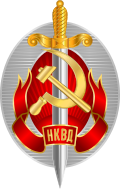
NKVD emblem |
|
| Agency overview | |
|---|---|
| Formed | 10 July 1934; 88 years ago |
| Preceding agencies |
|
| Dissolved | 15 March 1946; 77 years ago |
| Superseding agencies |
|
| Type |
• Law enforcement |
| Jurisdiction | Soviet Union |
| Headquarters | 11-13 ulitsa Bol. Lubyanka, Moscow, RSFSR, Soviet Union |
| Agency executives |
|
| Parent agency | Council of the People’s Commissars |
| Child agencies |
|
The People’s Commissariat for Internal Affairs (Russian: Наро́дный комиссариа́т вну́тренних дел, romanized: Naródnyy komissariát vnútrennikh del, pronounced [nɐˈrod.nɨj kə.mʲɪ.sə.rʲɪˈat ˈvnut.rʲɪ.nʲɪx̬ dʲel]), abbreviated NKVD (НКВД listen (help·info)), was the interior ministry of the Soviet Union.
Established in 1917 as NKVD of the Russian Soviet Federative Socialist Republic,[1] the agency was originally tasked with conducting regular police work and overseeing the country’s prisons and labor camps.[2] It was disbanded in 1930, with its functions being dispersed among other agencies, only to be reinstated as an all-union commissariat in 1934.[3]
The functions of the OGPU (the secret police organization) were transferred to the NKVD around the year 1930, giving it a monopoly over law enforcement activities that lasted until the end of World War II.[2] During this period, the NKVD included both ordinary public order activities, and secret police activities.[4] The NKVD is known for its role in political repression and for carrying out the Great Purge under Joseph Stalin. It was led by Genrikh Yagoda, Nikolai Yezhov, and Lavrentiy Beria.[5][6][7]
The NKVD undertook mass extrajudicial executions of citizens, and conceived, populated and administered the Gulag system of forced labour camps. Their agents were responsible for the repression of the wealthier peasantry.[8][9] They oversaw the protection of Soviet borders and espionage (which included carrying out political assassinations), and enforced Soviet policy in communist movements and puppet governments in other countries,[10] most notably the repression and massacres in Poland in 1937 and 1938 to crush opposition and establish political control.[11]
In March 1946 all People’s Commissariats were renamed to Ministries. The NKVD became the Ministry of Internal Affairs (MVD).[12]
History and structure[edit]
After the Russian February Revolution of 1917, the Provisional Government dissolved the Tsarist police and set up the People’s Militsiya. The subsequent Russian October Revolution of 1917 saw a seizure of state power led by Lenin and the Bolsheviks, who established a new Bolshevik regime, the Russian Soviet Federative Socialist Republic (RSFSR). The Provisional Government’s Ministry of Internal Affairs (MVD), formerly under Georgy Lvov (from March 1917) and then under Nikolai Avksentiev (from 6 August [O.S. 24 July] 1917) and Alexei Nikitin (from 8 October [O.S. 25 September] 1917), turned into NKVD (People’s Commissariat of Internal Affairs) under a People’s Commissar. However, the NKVD apparatus was overwhelmed by duties inherited from MVD, such as the supervision of the local governments and firefighting, and the Workers’ and Peasants’ Militsiya staffed by proletarians was largely inexperienced and unqualified. Realizing that it was left with no capable security force, the Council of People’s Commissars of the RSFSR established (20 December [O.S. 7 December] 1917) a secret political police, the Cheka, led by Felix Dzerzhinsky. It gained the right to undertake quick non-judicial trials and executions, if that was deemed necessary in order to «protect the Russian Socialist-Communist revolution».
The Cheka was reorganized in 1922 as the State Political Directorate, or GPU, of the NKVD of the RSFSR.[13] In 1922 the USSR formed, with the RSFSR as its largest member. The GPU became the OGPU (Joint State Political Directorate), under the Council of People’s Commissars of the USSR. The NKVD of the RSFSR retained control of the militsiya, and various other responsibilities.
In 1934, the NKVD of the RSFSR was transformed into an all-union security force, the NKVD (which the Communist Party of the Soviet Union leaders soon came to call «the leading detachment of our party»), and the OGPU was incorporated into the NKVD as the Main Directorate for State Security (GUGB); the separate NKVD of the RSFSR was not resurrected until 1946 (as the MVD of the RSFSR). As a result, the NKVD also took over control of all detention facilities (including the forced labor camps, known as the Gulag) as well as the regular police. At various times, the NKVD had the following Chief Directorates, abbreviated as «ГУ»– Главное управление, Glavnoye upravleniye.
| Chronology of Soviet security agencies |
|
|
|
|
| 1917–22 | Cheka under SNK of the RSFSR<v
br>(All-Russian Extraordinary Commission) |
| 1922–23 | GPU under NKVD of the RSFSR (State Political Directorate) |
| 1920–91 | PGU KGB or INO under Cheka (later KGB) of the USSR (First Chief Directorate) |
| 1923–34 | OGPU under SNK of the USSR (Joint State Political Directorate) |
| 1934–46 | NKVD of the USSR (People’s Commissariat for Internal Affairs) |
| 1934–41 | GUGB of the NKVD of the USSR (Main Directorate of State Security of People’s Commissariat for Internal Affairs) |
| 1941 | NKGB of the USSR (People’s Commissariat of State Security) |
| 1943–46 | NKGB of the USSR (People’s Commissariat for State Security) |
| 1946–53 | MGB of the USSR (Ministry of State Security) |
| 1946–54 | MVD of the USSR (Ministry of Internal Affairs) |
| 1947–51 |
KI MID of the USSR |
| 1954–78 | KGB under the Council of Ministers of the Soviet Union (Committee for State Security) |
| 1978–91 | KGB of the USSR (Committee for State Security) |
| 1991 | MSB of the USSR (Interrepublican Security Service) |
| 1991 | TsSB of the USSR (Central Intelligence Service) |
| 1991 | KOGG of the USSR (Committee for the Protection of the State Border) |
|
- ГУГБ – государственной безопасности, of State Security (GUGB, Glavnoye upravleniye gosudarstvennoi bezopasnosti)
- ГУРКМ– рабоче-крестьянской милиции, of Workers and Peasants Militsiya (GURKM, Glavnoye upravleniye raboče-krest’yanskoi militsyi)
- ГУПВО– пограничной и внутренней охраны, of Border and Internal Guards (GUPVO, GU pograničnoi i vnytrennei okhrany)
- ГУПО– пожарной охраны, of Firefighting Services (GUPO, GU požarnoi okhrany)
- ГУШосДор– шоссейных дорог, of Highways (GUŠD, GU šosseynykh dorog)
- ГУЖД– железных дорог, of Railways (GUŽD, GU železnykh dorog)
- ГУЛаг– Главное управление исправительно-трудовых лагерей и колоний, (GULag, Glavnoye upravleniye ispravitelno-trudovykh lagerey i kolonii)
- ГЭУ – экономическое, of Economics (GEU, Glavnoye ekonomičeskoie upravleniye)
- ГТУ – транспортное, of Transport (GTU, Glavnoye transportnoie upravleniye)
- ГУВПИ – военнопленных и интернированных, of POWs and interned persons (GUVPI, Glavnoye upravleniye voyennoplennikh i internirovannikh)
Yezhov era[edit]
Until the reorganization begun by Nikolai Yezhov with a purge of the regional political police in the autumn of 1936 and formalized by a May 1939 directive of the All-Union NKVD by which all appointments to the local political police were controlled from the center, there was frequent tension between centralized control of local units and the collusion of those units with local and regional party elements, frequently resulting in the thwarting of Moscow’s plans.[14]
During Yezhov’s time in office, the Great Purge reached its height. In the years 1937 and 1938 alone, at least 1.3 million were arrested and 681,692 were executed for ‘crimes against the state’. The Gulag population swelled by 685,201 under Yezhov, nearly tripling in size in just two years, with at least 140,000 of these prisoners (and likely many more) dying of malnutrition, exhaustion and the elements in the camps (or during transport to them).[15]
On 3 February 1941, the 4th Department (Special Section, OO) of GUGB NKVD security service responsible for the Soviet Armed Forces military counter-intelligence,[16] consisting of 12 Sections and one Investigation Unit, was separated from GUGB NKVD USSR.
The official liquidation of OO GUGB within NKVD was announced on 12 February by a joint order No. 00151/003 of NKVD and NKGB USSR. The rest of GUGB was abolished and staff was moved to newly created People’s Commissariat for State Security (NKGB). Departments of former GUGB were renamed Directorates. For example, foreign intelligence unit known as Foreign Department (INO) became Foreign Directorate (INU); GUGB political police unit represented by Secret Political Department (SPO) became Secret Political Directorate (SPU), and so on. The former GUGB 4th Department (OO) was split into three sections. One section, which handled military counter-intelligence in NKVD troops (former 11th Section of GUGB 4th Department OO) become 3rd NKVD Department or OKR (Otdel KontrRazvedki), the chief of OKR NKVD was Aleksander Belyanov.
After the German invasion of the Soviet Union (June 1941), the NKGB USSR was abolished and on July 20, 1941, the units that formed NKGB became part of the NKVD. The military CI was also upgraded from a department to a directorate and put in NKVD organization as the (Directorate of Special Departments or UOO NKVD USSR). The NKVMF, however, did not return to the NKVD until January 11, 1942. It returned to NKVD control on January 11, 1942, as UOO 9th Department controlled by P. Gladkov. In April 1943, Directorates of Special Departments was transformed into SMERSH and transferred to the People’s Defense and Commissariates. At the same time, the NKVD was reduced in size and duties again by converting the GUGB to an independent unit named the NKGB.
In 1946, all Soviet Commissariats were renamed «ministries». Accordingly, the Peoples Commissariat of Internal Affairs (NKVD) of the USSR became the Ministry of Internal Affairs (MVD), while the NKGB was renamed as the Ministry of State Security (MGB).
In 1953, after the arrest of Lavrenty Beria, the MGB merged back into the MVD. The police and security services finally split in 1954 to become:
- The USSR Ministry of Internal Affairs (MVD), responsible for the criminal militia and correctional facilities.
- The USSR Committee for State Security (KGB), responsible for the political police, intelligence, counter-intelligence, personal protection (of the leadership) and confidential communications.
Main Directorates (Departments)[edit]
- State Security
- Workers-Peasants Militsiya
- Border and Internal Security
- Firefighting security
- Correction and Labor camps
- Other smaller departments
- Department of Civil registration
- Financial (FINO)
- Administration
- Human resources
- Secretariat
- Special assignment
Ranking system (State Security)[edit]
In 1935–1945 Main Directorate of State Security of NKVD had its own ranking system before it was merged in the Soviet military standardized ranking system.
- Top-level commanding staff
- Commissioner General of State Security (later in 1935)
- Commissioner of State Security 1st Class
- Commissioner of State Security 2nd Class
- Commissioner of State Security 3rd Class
- Commissioner of State Security (Senior Major of State Security, before 1943)
- Senior commanding staff
- Colonel of State Security (Major of State Security, before 1943)
- Lieutenant Colonel of State Security (Captain of State Security, before 1943)
- Major of State Security (Senior Lieutenant of State Security, before 1943)
- Mid-level commanding staff
- Captain of State Security (Lieutenant of State Security, before 1943)
- Senior Lieutenant of State Security (Junior Lieutenant of State Security, before 1943)
- Lieutenant of State Security (Sergeant of State Security, before 1942)
- Junior Lieutenant of State Security (Sergeant of State Security, before 1942)
- Junior commanding staff
- Master Sergeant of Special Service (from 1943)
- Senior Sergeant of Special Service (from 1943)
- Sergeant of Special Service (from 1943)
- Junior Sergeant of Special Service (from 1943)
NKVD activities[edit]
The main function of the NKVD was to protect the state security of the Soviet Union. This role was accomplished through massive political repression, including authorised murders of many thousands of politicians and citizens, as well as kidnappings, assassinations and mass deportations.
Domestic repressions[edit]
In implementing Soviet internal policy towards perceived enemies of the Soviet state («enemies of the people»), untold multitudes of people were sent to GULAG camps and hundreds of thousands were executed by the NKVD. Formally, most of these people were convicted by NKVD troikas («triplets»)– special courts martial. Evidential standards were very low: a tip-off by an anonymous informer was considered sufficient grounds for arrest. Use of «physical means of persuasion» (torture) was sanctioned by a special decree of the state, which opened the door to numerous abuses, documented in recollections of victims and members of the NKVD itself. Hundreds of mass graves resulting from such operations were later discovered throughout the country. Documented evidence exists that the NKVD committed mass extrajudicial executions, guided by secret «plans». Those plans established the number and proportion of victims (officially «public enemies») in a given region (e.g. the quotas for clergy, former nobles etc., regardless of identity). The families of the repressed, including children, were also automatically repressed according to NKVD Order no. 00486.
The purges were organized in a number of waves according to the decisions of the Politburo of the Communist Party. Some examples are the campaigns among engineers (Shakhty Trial), party and military elite plots (Great Purge with Order 00447), and medical staff («Doctors’ Plot»). Gas vans were used in the Soviet Union during the Great Purge in the cities of Moscow, Ivanovo and Omsk[17][18][19][20]
A number of mass operations of the NKVD were related to the persecution of whole ethnic categories. For example, the Polish Operation of the NKVD in 1937–1938 resulted in the execution of 111,091 Poles.[21] Whole populations of certain ethnicities were forcibly resettled. Foreigners living in the Soviet Union were given particular attention. When disillusioned American citizens living in the Soviet Union thronged the gates of the U.S. embassy in Moscow to plead for new U.S. passports to leave the USSR (their original U.S. passports had been taken for ‘registration’ purposes years before), none were issued. Instead, the NKVD promptly arrested all the Americans, who were taken to Lubyanka Prison and later shot.[22] American factory workers at the Soviet Ford GAZ plant, suspected by Stalin of being ‘poisoned’ by Western influences, were dragged off with the others to Lubyanka by the NKVD in the very same Ford Model A cars they had helped build, where they were tortured; nearly all were executed or died in labor camps. Many of the slain Americans were dumped in the mass grave at Yuzhnoye Butovo District near Moscow.[23] Even so, the people of the Soviet Republics still formed the majority of NKVD victims.
The NKVD also served as arm of the Russian Soviet communist government for the lethal mass persecution and destruction of ethnic minorities and religious beliefs, such as the Russian Orthodox Church, the Ukrainian Orthodox Church, the Roman Catholic Church, Greek Catholics, Islam, Judaism and other religious organizations, an operation headed by Yevgeny Tuchkov.
International operations[edit]
During the 1930s, the NKVD was responsible for political murders of those Stalin believed to oppose him. Espionage networks headed by experienced multilingual NKVD officers such as Pavel Sudoplatov and Iskhak Akhmerov were established in nearly every major Western country, including the United States. The NKVD recruited agents for its espionage efforts from all walks of life, from unemployed intellectuals such as Mark Zborowski to aristocrats such as Martha Dodd. Besides the gathering of intelligence, these networks provided organizational assistance for so-called wet business,[24] where enemies of the USSR either disappeared or were openly liquidated.[25]
The NKVD’s intelligence and special operations (Inostranny Otdel) unit organized overseas assassinations of political enemies of the USSR, such as leaders of nationalist movements, former Tsarist officials, and personal rivals of Joseph Stalin. Among the officially confirmed victims of such plots were:
- Leon Trotsky, a personal political enemy of Stalin and his most bitter international critic, killed in Mexico City in 1940;
- Yevhen Konovalets, prominent Ukrainian nationalist leader who was attempting to create a separatist movement in Soviet Ukraine; assassinated in Rotterdam, Netherlands
- Yevgeny Miller, former General of the Tsarist (Imperial Russian) Army; in the 1930s, he was responsible for funding anti-communist movements inside the USSR with the support of European governments. Kidnapped in Paris and brought to Moscow, where he was interrogated and executed
- Noe Ramishvili, Prime Minister of independent Georgia, fled to France after the Bolshevik takeover; responsible for funding and coordinating Georgian nationalist organizations and the August uprising, he was assassinated in Paris
- Boris Savinkov, Russian revolutionary and anti-Bolshevik terrorist (lured back into Russia and allegedly killed in 1924 by the Trust Operation of the GPU);
- Sidney Reilly, British agent of the MI6 who deliberately entered Russia in 1925 trying to expose the Trust Operation to avenge Savinkov’s death;
- Alexander Kutepov, former General of the Tsarist (Imperial Russian) Army, who was active in organizing anti-communist groups with the support of French and British governments
Prominent political dissidents were also found dead under highly suspicious circumstances, including Walter Krivitsky, Lev Sedov, Ignace Reiss, and former German Communist Party (KPD) member Willi Münzenberg.[26][27][28][29][30]
The pro-Soviet leader Sheng Shicai in Xinjiang received NKVD assistance in conducting a purge to coincide with Stalin’s Great Purge in 1937. Sheng and the Soviets alleged a massive Trotskyist conspiracy and a «Fascist Trotskyite plot» to destroy the Soviet Union. The Soviet Consul General Garegin Apresoff, General Ma Hushan, Ma Shaowu, Mahmud Sijan, the official leader of the Xinjiang province Huang Han-chang, and Hoja-Niyaz were among the 435 alleged conspirators in the plot. Xinjiang came under soviet influence.[31]
Spanish Civil War[edit]
During the Spanish Civil War, the NKVD ran Section X coordinating the Soviet intervention on behalf of the Spanish Republicans.[32] NKVD agents, acting in conjunction with the Communist Party of Spain, exercised substantial control over the Republican government, using Soviet military aid to help further Soviet influence.[33] The NKVD established numerous secret prisons around the capital Madrid, which were used to detain, torture, and kill hundreds of the NKVD’s enemies, at first focusing on Spanish Nationalists and Spanish Catholics, while from late 1938 increasingly anarchists and Trotskyists were the objects of persecution.[34] In 1937, Andrés Nin, the secretary of the Trotskyist POUM and his colleagues were tortured and killed in an NKVD prison in Alcalá de Henares.[35]
World War II operations[edit]
Prior to the German invasion, in order to accomplish its own goals, the NKVD was prepared to cooperate even with such organizations as the German Gestapo. In March 1940, representatives of the NKVD and the Gestapo met for one week in Zakopane, to coordinate the pacification of Poland; see Gestapo–NKVD conferences. It is claimed that the Soviet Union deported hundreds of German and Austrian Communists to the Gestapo, as unwanted foreigners, together with their documents. However, according to the work of scholar Wilhelm Mensing, there is no evidence that the Soviets specifically targeted German and Austrian Communists or others who perceived themselves as «anti-fascists» for deportations.[36] Furthermore, many NKVD units were later to fight the Wehrmacht, for example the 10th NKVD Rifle Division, which fought at the Battle of Stalingrad.
After the German invasion, the NKVD evacuated and killed prisoners. During World War II, NKVD Internal Troops units were used for rear area security, including preventing the retreat of Soviet Union army divisions. Though mainly intended for internal security, NKVD divisions were sometimes used at the front to stem the occurrence of desertion through Stalin’s Order No. 270 and Order No. 227 decrees in 1941 and 1942, which aimed to raise troop morale via brutality and coercion. At the beginning of the war the NKVD formed 15 rifle divisions, which had expanded by 1945 to 53 divisions and 28 brigades.[37] Though mainly intended for internal security, NKVD divisions were sometimes used in the front-lines, for example during the Battle of Stalingrad and the Crimean offensive.[37] Unlike the Waffen-SS, the NKVD did not field any armored or mechanized units.[37]
In the enemy-held territories, the NKVD carried out numerous missions of sabotage. After the fall of Kiev, NKVD agents set fire to the Nazi headquarters and various other targets, eventually burning down much of the city center.[38] Similar actions took place across the occupied Byelorussia and Ukraine.
The NKVD (later KGB) carried out mass arrests, deportations, and executions. The targets included both collaborators with Germany and non-communist resistance movements such as the Polish Home Army and the Ukrainian Insurgent Army aiming to separate from the Soviet Union, among others. The NKVD also executed tens of thousands of Polish political prisoners in 1940–1941, including the Katyń massacre.[39][40] On 26 November 2010, the Russian State Duma issued a declaration acknowledging Stalin’s responsibility for the Katyn massacre, the execution of 22,000 Polish POWs and intellectual leaders by Stalin’s NKVD. The declaration stated that archival material «not only unveils the scale of his horrific tragedy but also provides evidence that the Katyn crime was committed on direct orders from Stalin and other Soviet leaders.»[41]
NKVD units were also used to repress the prolonged partisan war in Ukraine and the Baltics, which lasted until the early 1950s. NKVD also faced strong opposition in Poland from the
Polish resistance known as the Armia Krajowa.
Postwar operations[edit]
After the death of Stalin in 1953, the new Soviet leader Nikita Khrushchev halted the NKVD purges. From the 1950s to the 1980s, thousands of victims were legally «rehabilitated» (i.e., acquitted and had their rights restored). Many of the victims and their relatives refused to apply for rehabilitation out of fear or lack of documents. The rehabilitation was not complete: in most cases the formulation was «due to lack of evidence of the case of crime». Only a limited number of persons were rehabilitated with the formulation «cleared of all charges».
Very few NKVD agents were ever officially convicted of the particular violation of anyone’s rights. Legally, those agents executed in the 1930s were also «purged» without legitimate criminal investigations and court decisions. In the 1990s and 2000s, a small number of ex-NKVD agents living in the Baltic states were convicted of crimes against the local population.
Intelligence activities[edit]
These included:
- Establishment of a widespread spy network through the Comintern.
- Operations of Richard Sorge, the «Red Orchestra», Willi Lehmann, and other agents who provided valuable intelligence during World War II.
- Recruitment of important UK officials as agents in the 1940s.
- Penetration of British intelligence (MI6) and counter-intelligence (MI5) services.
- Collection of detailed nuclear weapons design information from the U.S. and Britain during the Manhattan Project.
- Disruption of several confirmed plots to assassinate Stalin.
- Establishment of the People’s Republic of Poland and earlier its communist party along with training activists, during World War II. The first President of Poland after the war was Bolesław Bierut, an NKVD agent.
Soviet economy[edit]
The extensive system of labor exploitation in the Gulag made a notable contribution to the Soviet economy and the development of remote areas. Colonization of Siberia, the Far North, and the Far East was among the explicitly stated goals in the very first laws concerning Soviet labor camps. Mining, construction works (roads, railways, canals, dams, and factories), logging, and other functions of the labor camps were part of the Soviet planned economy, and the NKVD had its own production plans.[citation needed]
The most unusual part of the NKVD’s achievements was its role in Soviet science and arms development. Many scientists and engineers arrested for political crimes were placed in special prisons, much more comfortable than the Gulag, colloquially known as sharashkas. These prisoners continued their work in these prisons, and later released, some of them became world leaders in science and technology. Among such sharashka members were Sergey Korolev, the head designer of the Soviet rocket program and first human space flight mission in 1961, and Andrei Tupolev, the famous airplane designer. Aleksandr Solzhenitsyn was also imprisoned in a sharashka, and based his novel The First Circle on his experiences there.
After World War II, the NKVD coordinated work on Soviet nuclear weaponry, under the direction of General Pavel Sudoplatov. The scientists were not prisoners, but the project was supervised by the NKVD because of its great importance and the corresponding requirement for absolute security and secrecy. Also, the project used information obtained by the NKVD from the United States.
People’s Commissars[edit]
The agency was headed by a people’s commissar (minister). His first deputy was the director of State Security Service (GUGB).
- 1934–1936 Genrikh Yagoda, both people’s commissar of Interior and director of State Security
- 1936–1938 Nikolai Yezhov, people’s commissar of Interior
- 1936–1937 Yakov Agranov, director of State Security (as the first deputy)
- 1937–1938 Mikhail Frinovsky, director of State Security (as the first deputy)
- 1938 Lavrentiy Beria, director of State Security (as the first deputy)
- 1938–1945 Lavrentiy Beria, people’s commissar of Interior
- 1938–1941 Vsevolod Merkulov, director of State Security (as the first deputy)
- 1941–1943 Vsevolod Merkulov, director of State Security (as the first deputy)
- 1945–1946 Sergei Kruglov, people’s commissar of Interior
Note: In the first half of 1941 Vsevolod Merkulov transformed his agency into separate commissariat (ministry), but it was merged back to the people’s commissariat of Interior soon after the Nazi invasion of the Soviet Union. In 1943 Merkulov once again split his agency this time for good.
Officers[edit]
Andrei Zhukov has singlehandedly identified every single NKVD officer involved in 1930s arrests and killings by researching a Moscow archive. There are just over 40,000 names on the list.[42]
See also[edit]
- Bibliography of Stalinism and the Soviet Union § Terror, famine and the Gulag
- Poison laboratory of the Soviet secret services
- 10th NKVD Rifle Division
- Hitler Youth conspiracy, an NKVD case pursued in 1938
- NKVD filtration camp
- NKVD special camps in Germany 1945–49, internment camps set up at the end of World War II in eastern Germany (often in former Nazi POW or concentration camps) and other areas under Soviet domination, to imprison those suspected of collaboration with the Nazis, or others deemed to be troublesome to Soviet ambitions.
References[edit]
- ^ Semukhina, Olga B.; Reynolds, Kenneth Michael (2013). Understanding the Modern Russian Police. CRC Press. p. 74. ISBN 978-1-4822-1887-9.
- ^ a b Huskey, Eugene (2014). Russian Lawyers and the Soviet State: The Origins and Development of the Soviet Bar, 1917-1939. Princeton University Press. p. 230. ISBN 978-1-4008-5451-6.
- ^ Semukhina, Olga B.; Reynolds, Kenneth Michael (2013). Understanding the Modern Russian Police. CRC Press. p. 58. ISBN 978-1-4398-0349-3.
- ^ Khlevniuk, Oleg V. (2015). Stalin: New Biography of a Dictator. Yale University Press. p. 125. ISBN 978-0-300-16694-1.
- ^ Yevgenia Albats, KGB: The State Within a State. 1995, page 101
- ^ Robert Gellately. Lenin, Stalin, and Hitler: The Age of Social Catastrophe. Knopf, 2007 ISBN 978-1-4000-4005-6 p. 460
- ^ Catherine Merridale. Night of Stone: Death and Memory in Twentieth-Century Russia. Penguin Books, 2002 ISBN 978-0-14-200063-2 p. 200
- ^ Viola, Lynne (207). The Unknown Gulag: The Lost World of Stalin’s Special Settlements. New York: Oxford University Press.
- ^ Applebaum, Anne (2003). Gulag: A History. New York: Doubleday.
- ^ McDermott, Kevin (1995). «Stalinist Terror in the Comintern: New Perspectives». Journal of Contemporary History. 30 (1): 111–130. doi:10.1177/002200949503000105. JSTOR 260924. S2CID 161318303.
- ^ Applebaum, Anne (2012). Iron Curtain: The Crushing of Eastern Europe, 1944-1956. New York: Random House.
- ^ Statiev, Alexander (2010). The Soviet Counterinsurgency in the Western Borderlands. Cambridge University Press. ISBN 978-0-521-76833-7.
- ^ Blank Pages by G.C.Malcher ISBN 978-1-897984-00-0 Page 7
- ^
James Harris, «Dual subordination ? The political police and the party in the Urals region, 1918–1953», Cahiers du monde russe 22 (2001):423–446. - ^ Figes, Orlando (2007) The Whisperers: Private Life in Stalin’s Russia ISBN 978-0-8050-7461-1, page 234.
- ^ GUGB NKVD. Archived 2020-10-08 at the Wayback Machine DocumentsTalk.com, 2008.
- ^ Человек в кожаном фартуке. Новая газета — Novayagazeta.ru (in Russian). 2010-08-02. Retrieved 2019-01-21.
- ^ Timothy J. Colton. Moscow: Governing the Socialist Metropolis. Belknap Press, 1998. ISBN 978-0-674-58749-6 p. 286
- ^ Газовые душегубки: сделано в СССР (Gas vans: made in the USSR) Archived August 3, 2019, at the Wayback Machine by Dmitry Sokolov, Echo of Crimea, 09.10.2012
- ^ Григоренко П.Г. В подполье можно встретить только крыс… (Petro Grigorenko, «In the underground one can meet only rats») — Нью-Йорк, Издательство «Детинец», 1981, page 403, Full text of the book (Russian)
- ^ Goldman, Wendy Z. (2011). Inventing the Enemy: Denunciation and Terror in Stalin’s Russia. New York: Cambridge University Press. ISBN 978-0-521-19196-8. p. 217.
- ^ Tzouliadis, Tim, The Forsaken: An American Tragedy in Stalin’s Russia Penguin Press (2008), ISBN 978-1-59420-168-4: Many of the Americans desiring to return home were communists who had voluntarily moved to the Soviet Union, while others moved to Soviet Union as skilled auto workers to help produce cars at the recently constructed GAZ automobile factory built by the Ford Motor Company. All were U.S. citizens.
- ^ Tzouliadis, Tim, The Forsaken: An American Tragedy in Stalin’s Russia Penguin Press (2008), ISBN 978-1-59420-168-4
- ^ Barmine, Alexander, One Who Survived, New York: G.P. Putnam (1945), p. 18: NKVD expression for a political murder
- ^ John Earl Haynes and Harvey Klehr, Venona: Decoding Soviet Espionage in America, (New Haven: Yale University Press, 1999)
- ^ Barmine, Alexander, One Who Survived, New York: G.P. Putnam (1945), pp. 232–233
- ^ Orlov, Alexander, The March of Time, St. Ermin’s Press (2004), ISBN 978-1-903608-05-0
- ^ Andrew, Christopher and Mitrokhin, Vasili, The Sword and the Shield: The Mitrokhin Archive and the Secret History of the KGB, Basic Books (2000), ISBN 978-0-465-00312-9, ISBN 978-0-465-00312-9, p. 75
- ^ Barmine, Alexander, One Who Survived, New York: G. P. Putnam (1945), pp. 17, 22
- ^ Sean McMeekin, The Red Millionaire: A Political Biography of Willi Münzenberg, Moscow’s Secret Propaganda Tsar in the West, 1917–1940, New Haven, Connecticut: Yale University Press (2004), pp. 304–305
- ^ Andrew D. W. Forbes (1986). Warlords and Muslims in Chinese Central Asia: a political history of Republican Sinkiang 1911–1949. Cambridge, England: CUP Archive. p. 151. ISBN 978-0-521-25514-1. Retrieved 2010-12-31.
- ^ «4. The Spanish Civil War (1936– 1939)», Secret Wars, Princeton University Press, p. 115, 2018-12-31, doi:10.1515/9780691184241-005, ISBN 978-0-691-18424-1, S2CID 227568935, retrieved 2022-02-07
- ^ Robert W. Pringle (2015). Historical Dictionary of Russian and Soviet Intelligence. Rowman & Littlefield. pp. 288–89. ISBN 978-1-4422-5318-6.
- ^ Christopher Andrew (2000). The Sword and the Shield: The Mitrokhin Archive and the Secret History of the KGB. Basic Books. p. 73. ISBN 978-0-465-00312-9.
- ^ David Clay Large (1991). Between Two Fires: Europe’s Path in the 1930s. W.W. Norton. p. 308. ISBN 978-0-393-30757-3.
- ^ Mensing, Wilhelm (2006). «Eine «Morgengabe» Stalins an den Paktfreund Hitler? Die Auslieferung deutscher Emigranten an das NS-Regime nach Abschluß des Hitler-Stalin-Pakts – eine zwischen den Diktatoren arrangierte Preisgabe von «Antifaschisten»?». Zeitschrift des Forschungsverbundes SED-Staat (in German). 20 (20). ISSN 0948-9878.
- ^ a b c Zaloga, Steven J. The Red Army of the Great Patriotic War, 1941–45, Osprey Publishing, (1989), pp. 21–22
- ^ Birstein, Vadim (2013). Smersh: Stalin’s Secret Weapon. Biteback Publishing. ISBN 978-1-84954-689-8. Retrieved 4 June 2017.
- ^ Sanford, George (2007-05-07). Katyn and the Soviet Massacre of 1940: Truth, Justice and Memory. Routledge. ISBN 978-1-134-30299-4.
- ^ «Lviv museum recounts Soviet massacres | Центр досліджень визвольного руху». 2019-01-15. Archived from the original on January 15, 2019. Retrieved 2020-11-17.
- ^ Barry, Ellen (26 November 2010). «Russia: Stalin Called Responsible for Katyn Killings». The New York Times. Retrieved 17 November 2020.
- ^ Walker, Shaun (6 February 2017). «Stalin’s secret police finally named but killings still not seen as crimes». The Guardian.
Further reading[edit]
See also: Bibliography of Stalinism and the Soviet Union § Violence and terror and Bibliography of Stalinism and the Soviet Union § Terror, famine and the Gulag
- Hastings, Max (2015). The Secret War: Spies, Codes and Guerrillas 1939 -1945 (paperback). London: William Collins. ISBN 978-0-00-750374-2.
External links[edit]
Media related to NKVD at Wikimedia Commons
- For evidence on Soviet espionage in the United States during the Cold War, see the full text of Alexander Vassiliev’s Notebooks from the Cold War International History Project (CWIHP)
- NKVD.org: information site about the NKVD
- (in Russian) MVD: 200-year history of the Ministry
- (in Russian) Memorial: history of the OGPU/NKVD/MGB/KGB Archived 2016-12-10 at the Wayback Machine
НКВД
Название: |
НКВД |
Официальное название: |
Народный Комиссариат Внутренних Дел |
Статус: |
упразднен |
Дата создания: |
26 октября 1917 года |
Дата упразднения: |
15 марта 1946 года |
Наркомат (Наркомвнудел, НКВД) внутренних дел РСФСР и СССР (1917-1923, 1934-1946) — центральный государственный орган для организации внутреннего административного управления и охраны общественного порядка.
Руководители НКВД РСФСР
Руководители НКВД СССР
НКВД РСФСР образован декретом II Всероссийского съезда Советов 26 октября 1917 года.
7 октября 1918 года в составе НКВД было организовано Главное управление милиции (Главмилиция).
С весны 1919 года постановлением ВЦИК к ведению НКВД было отнесено руководство исправительно-трудовым делом, а с 12 июля 1920 года — пожарным делом (до этого находилось в ведении ВСНХ).
В компетенцию НКВД входили также регистрация актов гражданского состояния, руководство эвакуацией населения в годы гражданской войны, организация коммунального хозяйства.
После образования СССР НКВД оставался республиканским наркоматом. 15 декабря 1930 года совместным решением ВЦИК и СНК СССР НКВД союзных и автономных республик были ликвидированы. Вместо них при СНК союзных и автономных республик создавались Главные управления коммунального хозяйства, в которые входили службы пожарного дела, управления милиции и уголовного розыска. Места заключения были переданы в ведение наркоматов юстиции союзных республик.
10 июля 1934 года постановлением ЦИК СССР был образован общесоюзный НКВД с включением в его состав ОГПУ СССР, преобразованного в Главное управление государственной безопасности (ГУГБ).
Постановлениями ЦИК и СНК СССР от 17 сентября и 27 октября 1934 года НКВД были переданы конвойные войска и исправительно-трудовые учреждения. Одновременно в НКВД входило Главное управление милиции и ряд других служб: пожарное и архивное дело, Главное управление лагерей (ГУЛАГ) и т. д.
Главенствующую роль в системе НКВД играло ГУГБ, выполнявшее задачи по ведению разведки, политического контроля и политического розыска.
Контроль за деятельностью НКВД и ГУГБ как его основного звена осуществляло Политбюро во главе с И. В. Сталиным. В результате нормы права все больше уступали место административному произволу.
10 июля 1934 года при наркоме внутренних дел было образовано Особое совещание, имевшее право применять в административном порядке ссылку и заключение на срок до пяти лет.
Приказом НКВД от 27 мая 1935 года в органах внутренних дел республик, краев и областей создавались «тройки» НКВД с правами Особого совещания. Приказом НКВД от 30 июля 1937 года были созданы специальные органы, выносившие приговор без ограничений, — «тройки» в республиках, краях и областях с участием первого секретаря партийного комитета, начальника управления внутренних дел и прокурора.
Рассмотрение дел по спискам приказами НКВД от 11 августа и 20 сентября 1937 года проводилось «двойками» в том же составе, без участия прокурора.
«Тройки» и «двойки» были ликвидированы приказом НКВД от 26 ноября 1938 года во исполнение постановления СНК и ЦК ВКП(б) от 17 ноября 1938 года «Об арестах, прокурорском надзоре и ведении следствия».
Указом Президиума ВС СССР от 3 февраля 1941 года НКВД был разделен на Наркомат внутренних дел и Наркомат государственной безопасности. 20 июля 1941 года они вновь были слиты в рамках НКВД, а 14 апреля 1943 года из НКВД опять был выделен Наркомат государственной безопасности (НКГБ).
По постановлению Верховного Совета от 15 марта 1946 года наркоматы были преобразованы в министерства.
Источники информации:
1. Справочник «Высшие органы государственной власти и управления России IX-XX вв.»
Статьи категории НКВД

